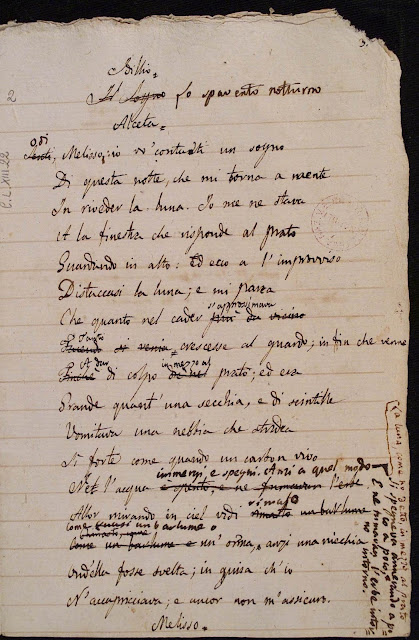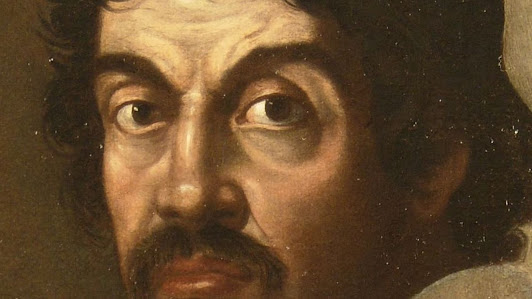Onward with the past: "Renaissance", a period of emulated antiquities // Ricalcando il passato: “Rinascimento”, un periodo di antichità emulata
Beauty and equilibrium. These are the key words to describe the notorious period known as "Renaissance": in truth, as the denomination clearly suggests, art in this century is but a mere copycat of what had already bloomed during the golden age of antiquity. Renaissance artists envied those endearing elements of Greek perfection, that ancient equilibrium between composition and silhouette, graceful yet sturdy form apprehended in all those marble and bronze sculptures, all achieved through creativity and a few methodical hits from a chisel.
But why? Wouldn't a period like this, splitting the second millennium down the middle, be more apt to turning a corner? Why such a need for digging up bones as far as ancient Greece and Rome?
The answer is quite simple: to continue walking forward, first we must take a step back.
Considering the period Europe had just emerged from, the Middle Ages, which are conventionally crowned as "the Dark Ages", we find that it was a fairly natural response for mankind to return to their roots in such a way: think of it as a short rest, stopping by an oasis to replenish one's strength and energy, before continuing to march onward, after a long and tiresome journey.
And it had been quite the tiresome journey: from unyielding conflicts, including the Hundred Years' War, which brought destruction upon the economy of both England and France, to the Black Plague, a disease so devastating it wiped a third of the population off of the face of the Earth, we could say that historians are right to define these one thousand years of nefarious mishappenings as "the Dark Ages".
That yearn for the perfection of ancient greek and roman works now suddenly feels more like a cry for help, a need to break free from the murk and return to a status of glory and prosperity, just like the one of their ancestors. Those who cried louder and prouder were also the ones whose echo we still hear today, or in this case, see: Sandro Botticelli's 'magnum opera' "the Birth of Venus" and "Primavera", Donatello's bronze "David", which would be later on joined by the countless appalling creations of Michelangelo and Leonardo Da Vinci. All of these artist paint -or sculpt- accurate depiction of those thoroughly sought out values, the composition is methodically harmonious, recalling for certain aspects the renowned mythology of both ancient Greece and Roman Empire, the nude as a symbol of natural virility and beauty, Mother Nature as a forced to be reckoned with: imperfect perfection.
So it began: the rebirth of European antiquity, slipping through the cracks of time and hiding in a new age, one which needed to be reshaped and moulded after it had been struck down by war and death; by simply reminding humanity of the ancient yet simultaneously modern values their predecessors had established, those aphonic and bygone statues found their way back to us, cherished as timeless heritage and proof of one of the most culturally advanced civilisations that have ever engraved the flow of time.
_____________________________________
Bellezza ed equilibrio. Sono queste le parole chiave per descrivere il periodo notoriamente conosciuto come ”Rinascimento”: in effetti, come potrebbe chiaramente suggerire il termine con cui viene indicata quest’epoca, l’arte in questi secoli può essere considerata come una ripresa di quello che era già fiorito nel cuore dell’età antica.
Gli artisti rinascimentali ammiravano il fascino suscitato dalla perfezione dell’arte greca, quell’iniziale equilibrio tra composizione e silhouette, quella forma graziosa ma stabile della statuaria in marmo e bronzo, tutto ottenuto attraverso la creatività e qualche esperto colpo di scalpello.
Ma perché? Non sarebbe più opportuno che un’epoca tale, che divide a metà il secondo millennio, fosse proiettata al futuro? Perché tutta questa necessità di riesumare tradizioni così antiche come quelle greche e romane?
La risposta è abbastanza semplice: per camminare verso il progresso, prima bisogna volgere lo sguardo al passato.
Considerando il periodo da cui l’Europa era appena emersa, il Medioevo, convenzionalmente denominato con l’appellativo ”Secoli Bui”, si può ritenere il ritornare alle proprie radici una naturale conseguenza: proprio come una breve sosta, un accostarsi presso un’oasi per riprendere fiato e risanare se stessi, per poi proseguire verso la meta, dopo un lungo e tortuoso viaggio.
E di fatto è stato un viaggio abbastanza tortuoso: tra conflitti incessanti, inclusa la Guerra dei Cent’anni, che ha destabilizzato l’economia di entrambi i paesi in conflitto, Inghilterra e Francia, e la peste nera, un morbo talmente letale da annichilire un terzo della popolazione dell’epoca coeva, potremmo concordare con gli storici quando effettivamente definiscono questo susseguirsi di efferate disavventure come ”Secoli Bui”.
D’un tratto, quella bramosa sete di bere dalla fonte della perfezione delle creazioni antiche greche e romane diventa un grido d’aiuto, la necessità di emergere dalle tenebre e ristabilire lo stato di gloria e prosperità, parallelo a quello acquisito dai loro antenati. Quelli che urlarono più forte e con più vigore furono anche coloro dei quali echi oggi sentiamo ancora, o meglio, vediamo: le ‘magna opera’ di Sandro Botticelli ”La Nascita di Venere” e ”La Primavera”, il bronzeo ”David” di Donatello, a cui poi si sarebbero affiancate le innumerevoli creazioni ammalianti di Michelangelo Buonarroti e Leonardo Da Vinci. Questi e molti altri artisti dipinsero - o scolpirono- scrupolose rappresentazioni di quei valori costantemente ricercati; la composizione è armoniosa, richiamando per certi aspetti il celeberrimo cerchio dei miti sia dell’antica Grecia che dell’Impero Romano, la nudità come simbolo di virilità e bellezza, Madre Natura come una forza da non sottovalutare: imperfetta perfezione.
Quindi ebbe inizio: la rinascita dell’antichità europea, scivolando fra le crepe del tempo e per fare capolino in una nuova epoca in necessità di essere rimodellata con argilla nuova, sopraffatta dalla spaventosa falce della morte; tramite il semplice rimembrare all’umanità degli antichi e simultaneamente moderni valori stabiliti dai loro predecessori, quelle statue afoniche e di un’epoca arcaica sono riuscite a persistere nel tempo e giungere a noi sotto forma di patrimonio senza tempo, ma soprattutto di testimonianza dell’esistenza di una delle culture più avanzate che hanno solcato il flusso del tempo.



Commenti